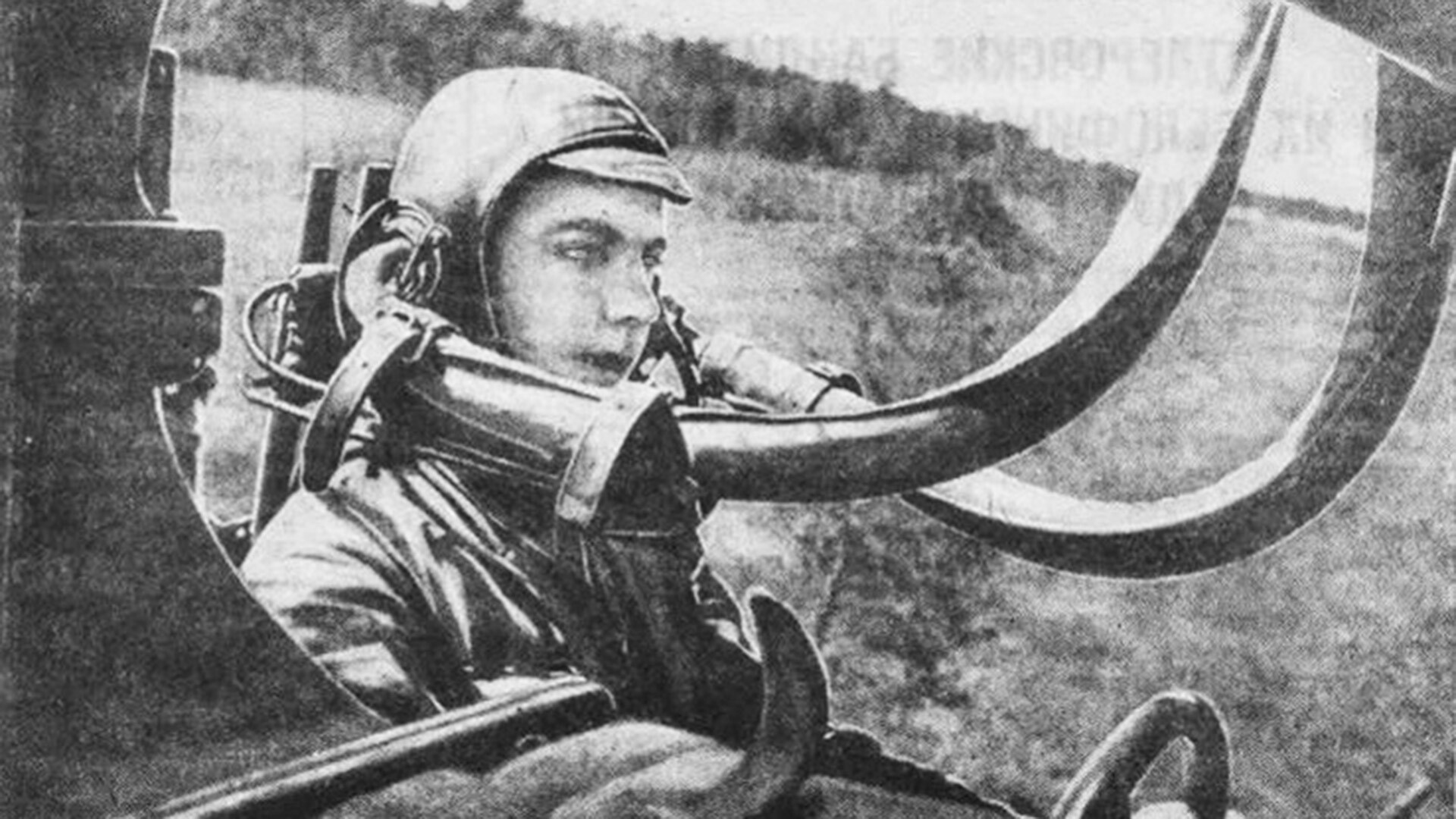
“Eavesdropper” V. Alekseev on combat duty.
L. BernsteinOn September 8, 1941, German troops completed the encirclement of Leningrad by land. Thus began the horrendous 872-day siege of the second most important city of the Soviet Union.
The Luftwaffe immediately subjected Leningrad to massive bombing and all available air defense resources and capabilities were thrown into defending Leningraders, the residential areas of the city and its numerous monuments of architecture. It was then that - in a first for the Russian military - special non-sighted soldiers joined the effort to combat the enemy aircraft.
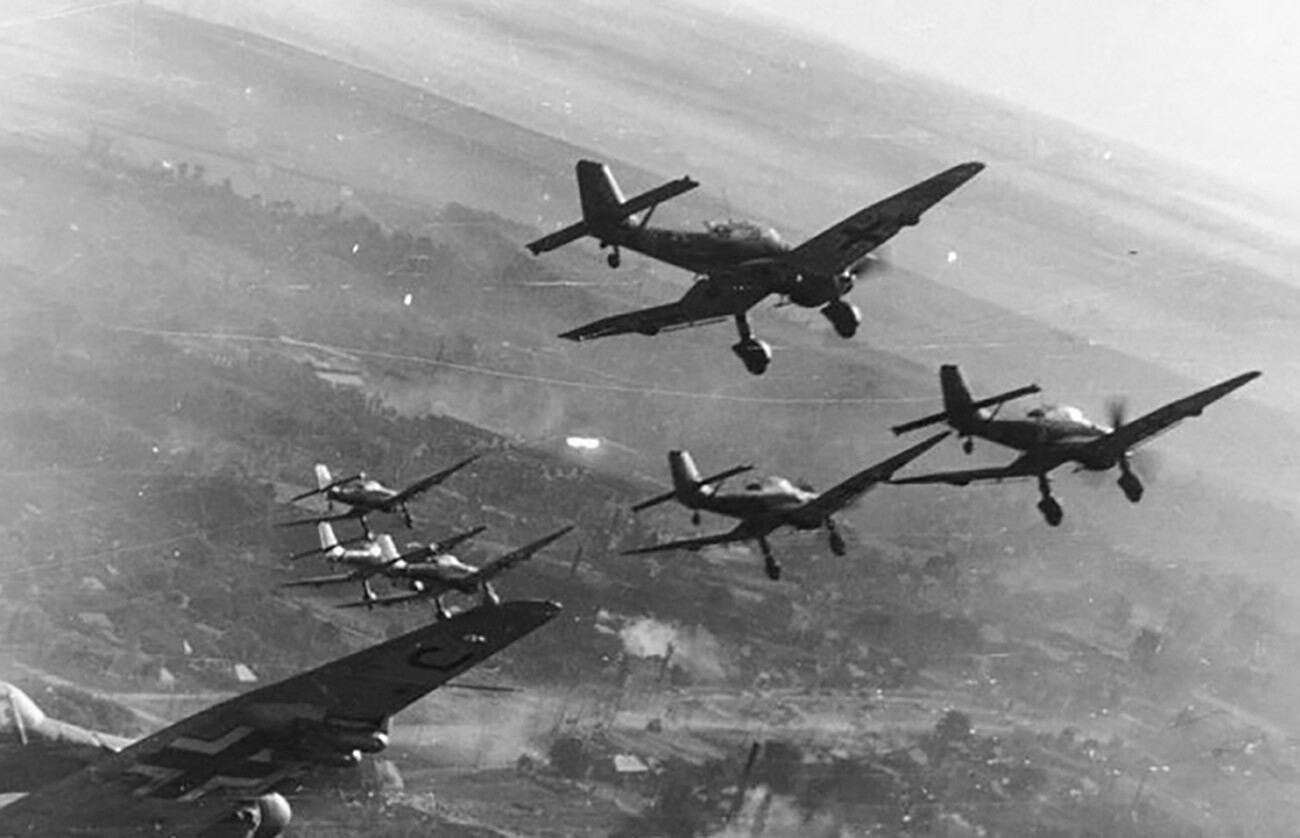
German Ju 87 bombers attack.
Public DomainAlong with radars, so-called sound detectors were the main method for detecting enemy aircraft. These cumbersome devices consisted of a system of tubes of various sizes that made it possible to hear the hum of approaching enemy aircraft at a great distance.
Specially selected servicemen - “eavesdroppers” - tried to pick out the hum. The crews operating the detectors rotated them until the sound in the ears of the listening expert was of uniform intensity. On detecting the approaching enemy, he would immediately warn his comrades and then the beams of numerous searchlights would probe the sky searching for targets, while the anti-aircraft guns would be put on combat readiness.
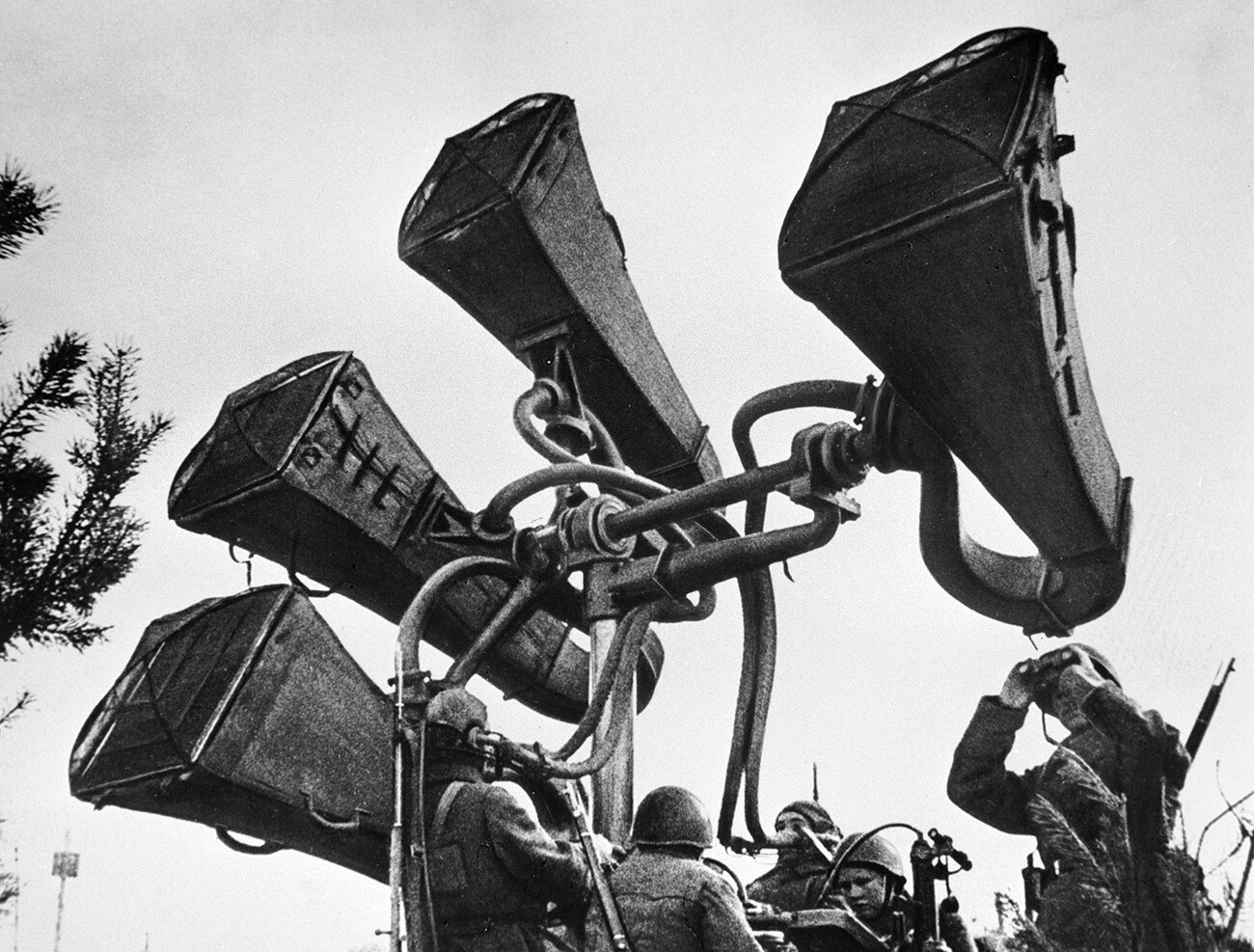
Sound detector.
Alexander Ustinov/SputnikUnfortunately, the effectiveness of the efforts of the first “eavesdroppers” left much to be desired, so, at the end of 1941, the command of the air defense forces decided to take a bold step - and involve the blind in the defense of the city. Indeed, detecting enemy aviation required not just excellent, but exceptional hearing - and that was something that blind people possessed.
By early 1942, a little over 300 non-sighted people remained in the city. Many of them worked in special workshops making camouflage netting for buildings, gloves for the army or slippers for the wounded. Others lifted the morale of servicemen by performing in musical ensembles.

Soviet anti-aircraft gunners fire at enemy planes.
Anatoly Garanin/SputnikSelection into the ranks of “eavesdroppers” was strict. Women were immediately weeded out, since the work required enormous physical endurance. Thirty people passed their medical assessment, of whom 20 went on to attend special training courses. In the end, 12 men with the most outstanding hearing were picked to be “eavesdroppers” and deployed to anti-aircraft artillery regiments.
The new army acousticians, who just recently had been tuning pianos or giving bravura performances on the bayan (a type of accordion), had to take on the most difficult of workloads during shifts lasting many hours. Quite frequently, they had to pick out the hum of aircraft through the roar of artillery as the city came under shell fire.
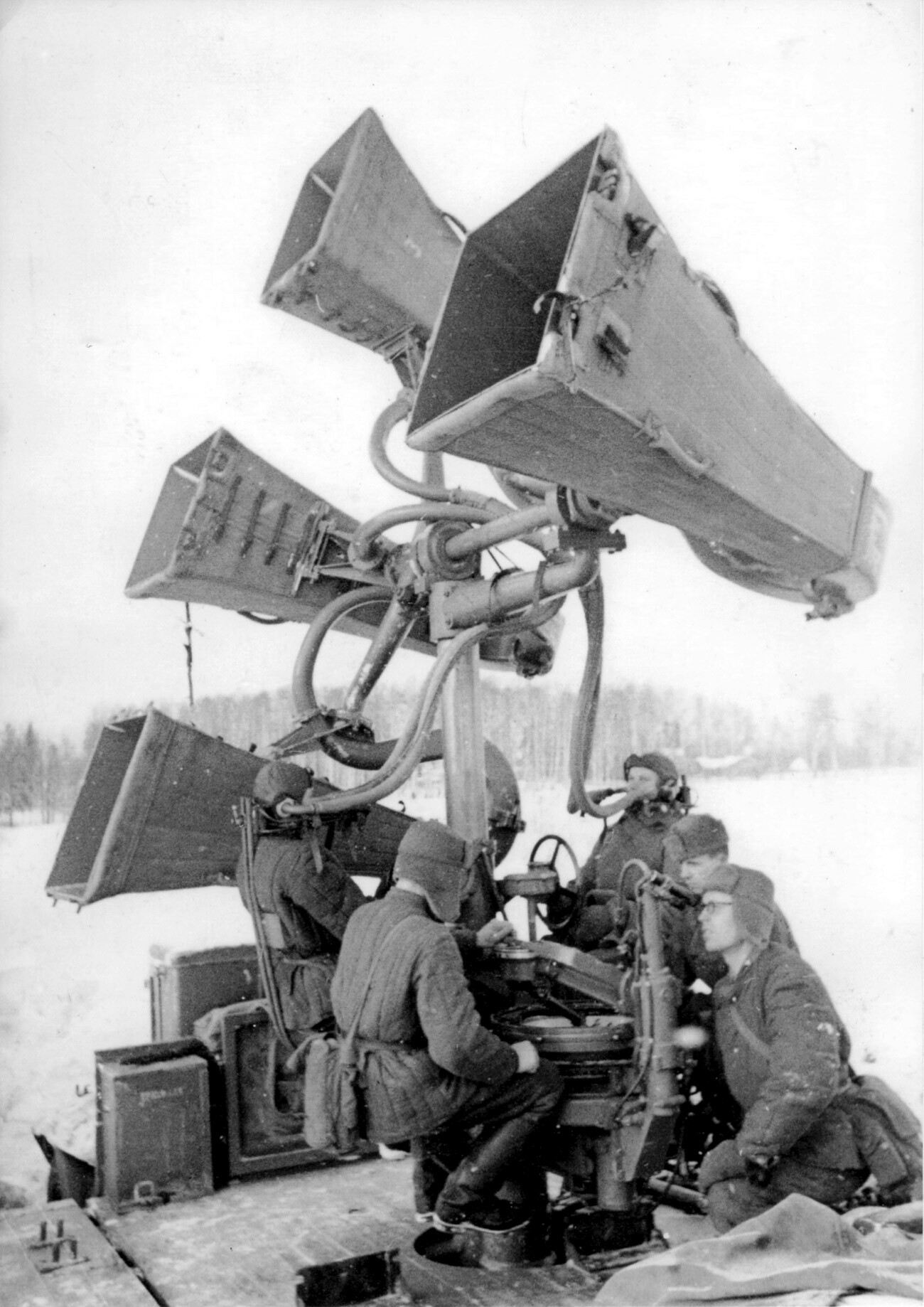
Sound detector on combat duty.
Public DomainSiege survivor, writer and poet Semyon Bytovoy gave a vivid description of the heroism of the blind “eavesdroppers” in his 1974 story ‘Leningrad Ballad’: “After taking off their ear-flap hats and putting on leather headgear that covered almost the whole of their face, the listeners reclined in their chairs and, propping the back of their head against headrests upholstered in smooth leather, started to turn small wheels which set the sound amplifying tubes slowly and vigilantly turning. There were plenty of different noises in the air, creating a continuous din. From time to time, the distant rattle of machine-gun fire, the whistle of a shell or the dull thud of an exploding mine blended into the general noise…”
“This scanning of the air lasted many hours in a row and sometimes all night and, for all that time, the amplifying tubes had to be turned and the listeners had to maintain their head in the same position,” Bytovoy wrote. “Because of the strain, their temples began to throb horribly and they felt a crick forming in the vertebrae of their neck. Incredible effort, concentration and determination were needed to monitor the sky, from which a suspicious sound could materialize at any moment.”
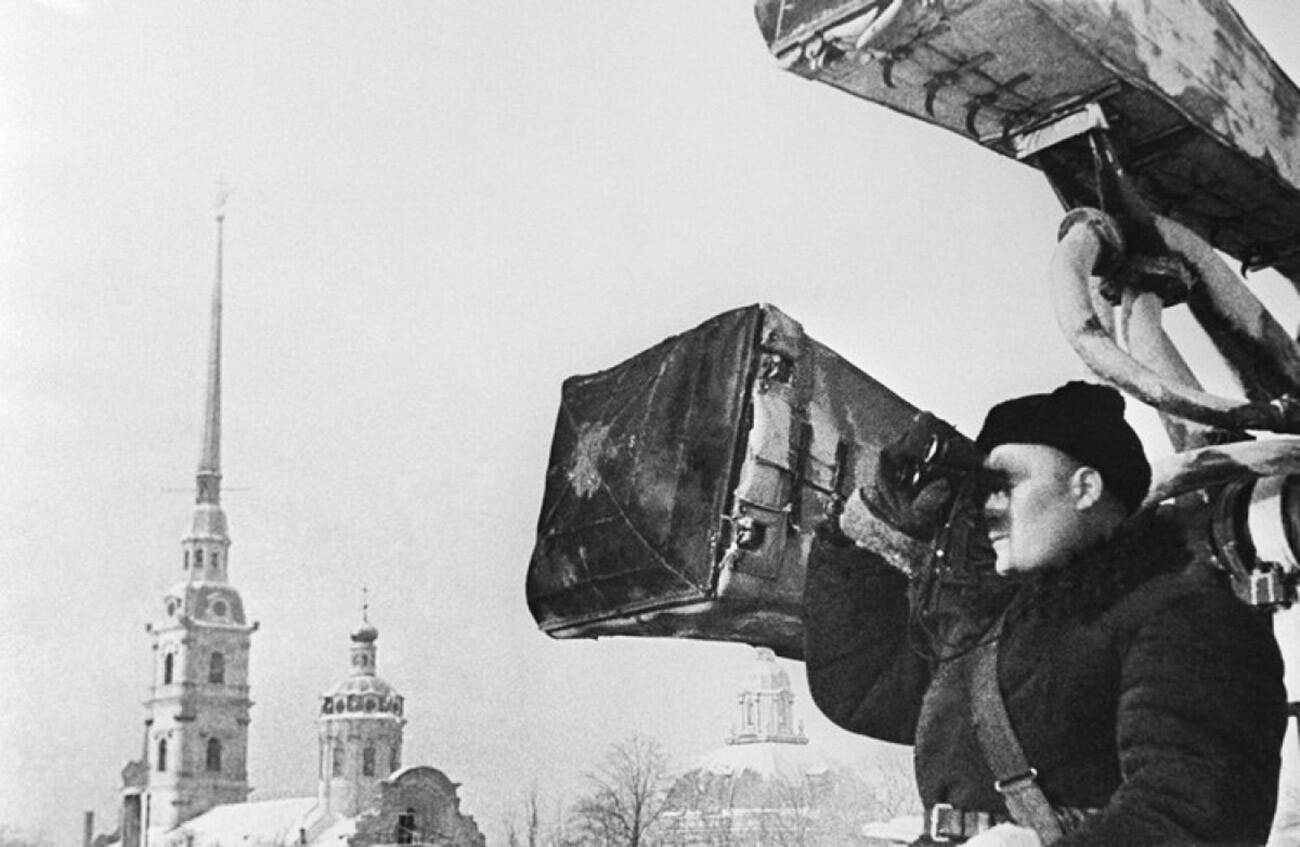
Sound detector on combat duty.
Public DomainThe non-sighted defenders immediately demonstrated their enormous effectiveness. They could detect enemy aviation long before it came close to the front line. Everything may have been quiet in the city, but the “eavesdroppers” were already warning of the danger that loomed. They could identify the type and model of approaching German aircraft and, sometimes, the approximate number of planes in a group.
These special combatants had their share of casualties, too. Averky Nikonov died in the line of duty in February 1942, while Vasily Tsyplenkov, demobilized that summer on health grounds, died of dystrophy shortly afterwards.
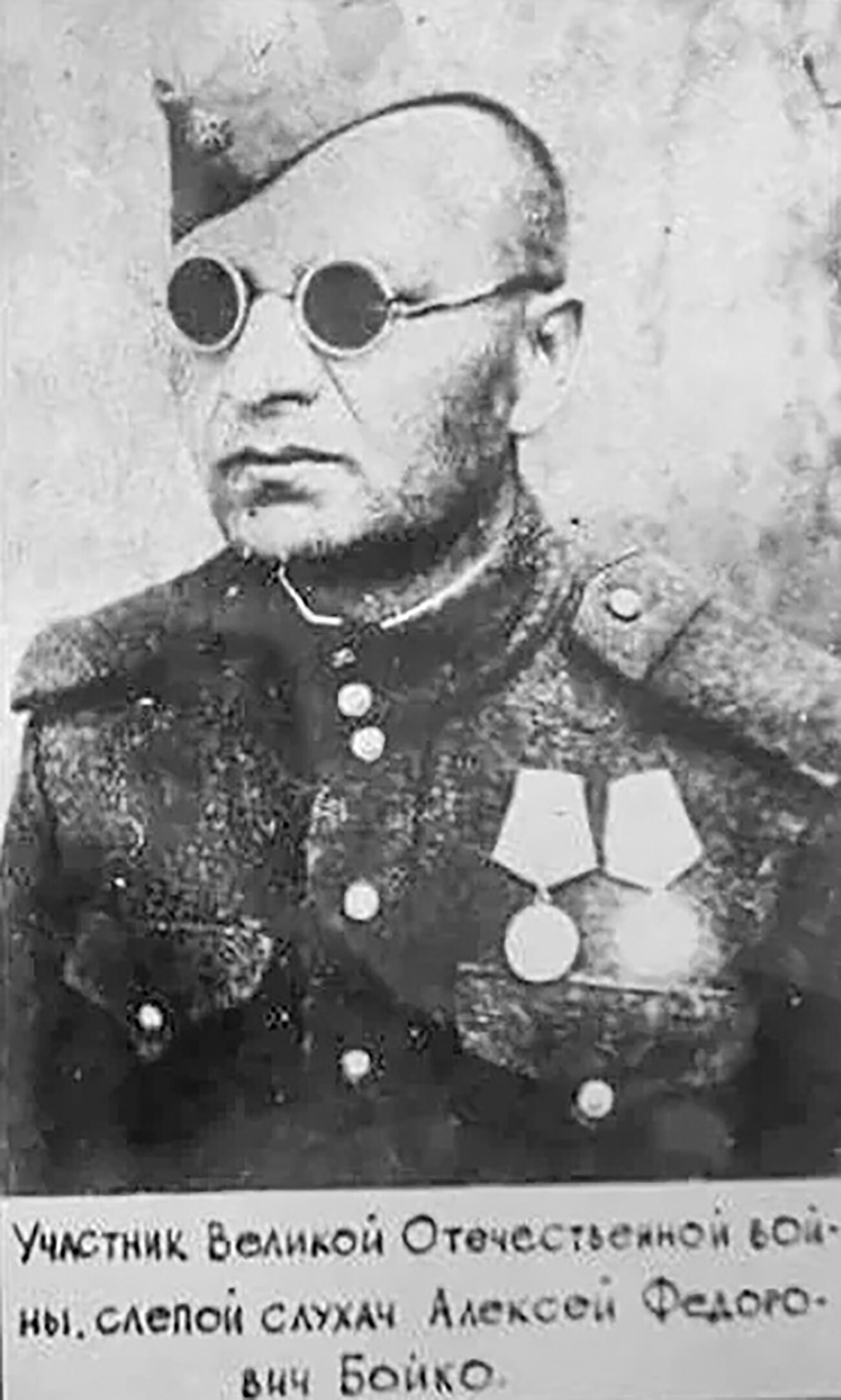
“Eavesdropper” Alexey Boyko.
Public DomainThe remaining blind “eavesdroppers”, however, managed to survive until the lifting of the Siege of Leningrad in 1944, an event awaited for so long. After the final victory came and they had been decorated with numerous awards for saving thousands of lives and hundreds of objects of cultural heritage, they went back once again to their civilian occupations.
If using any of Russia Beyond's content, partly or in full, always provide an active hyperlink to the original material.
Subscribe
to our newsletter!
Get the week's best stories straight to your inbox